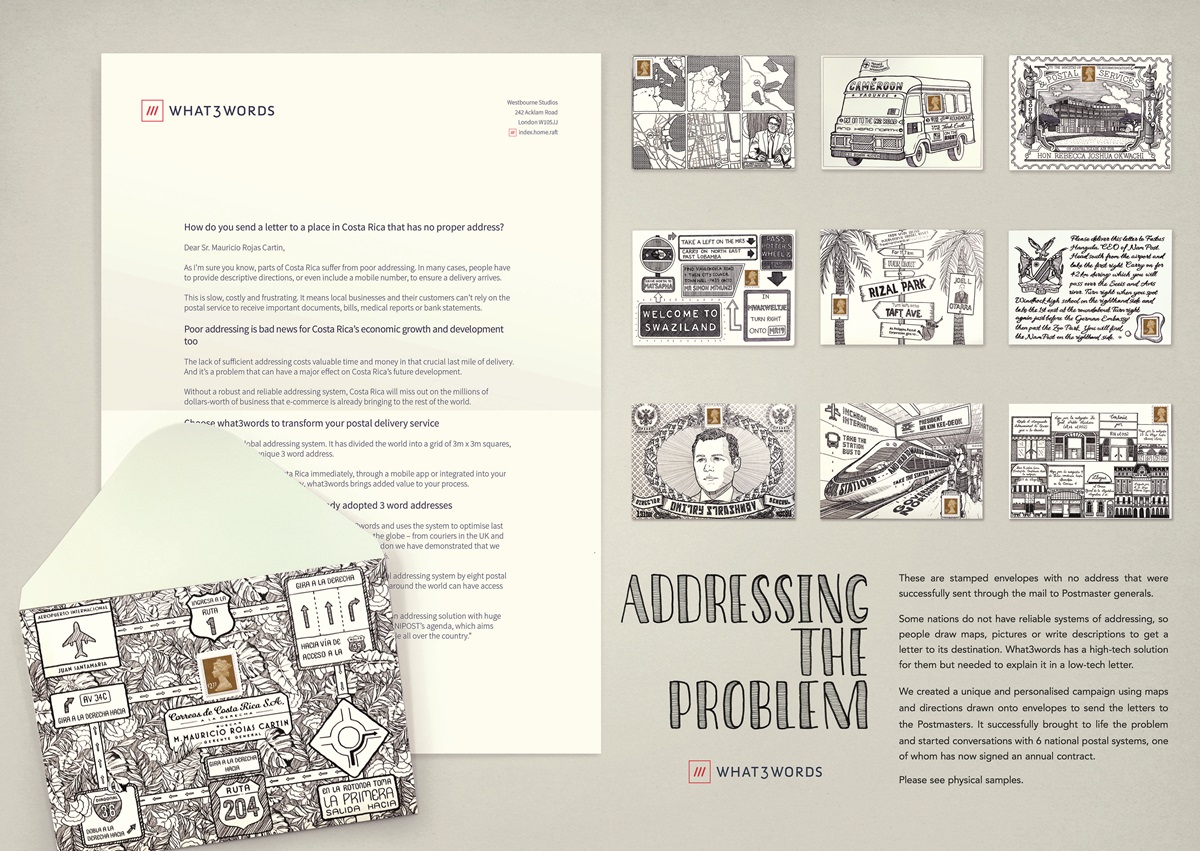
Addressing The Problem
By Ogilvy UK, London, UK
For W3W Brand W3W
Highly Commended in category Direct
In subcategory Business to Business

Project Description
Around 75% of the world, including many developing nations, lack a proper address system. Leaving around 4 billion people virtually invisible without a reliable way of receiving important mail. In addition, lack of a proper addressing system is a barrier to growth for developing nations as they cannot benefit from the increase in mail from e-commerce.
Putting an addressing infrastructure in place normally costs millions of dollars and can take years to accomplish.
Our brief was to directly contact Postmasters in selected developing markets to drive leads. Specifically, we wanted to convince them that we understand the problem in their country and that we could provide a cost effective and time efficient way of providing their nation with an addressing solution. Our objective was to have them contact us to begin a conversation.
Putting an addressing infrastructure in place normally costs millions of dollars and can take years to accomplish.
Our brief was to directly contact Postmasters in selected developing markets to drive leads. Specifically, we wanted to convince them that we understand the problem in their country and that we could provide a cost effective and time efficient way of providing their nation with an addressing solution. Our objective was to have them contact us to begin a conversation.
Agency Solution
Our challenge was to get the mailings to their destinations safely when there was no reliable addressing system in place. However, we also wanted each mailing to communicate clearly to Postmasters the difficulties their citizens face when trying to send mail around the country. Our creative leap was to use the ingenious methods the local people in those countries use when they are sending letters; hand written directions, maps, descriptions and drawings. We painstakingly researched the locations of each of the Postal Head Quarters in each of the nations. Then we set about carefully crafting pictorial “addresses” on the front of each envelope. Each pictorial address was unique and specifically designed to assist the postman to get the mailing safely to its destination. The added bonus of this creative solution was that it communicated clearly to the Post Masters the problem of having no clear addressing system and the lengths people were having to go to when sending mail.
6 illustrators worked on various executions. They were given the brief of where and who the letter was to be sent to. With simple yet charming line drawings and penmanship they produced hand drawn clues to the address. Whether that was through maps, transport hints, calligraphic descriptions, portraits of the intended recipient or even of the building itself.
Their creations were printed onto envelopes ready for delivery.
6 illustrators worked on various executions. They were given the brief of where and who the letter was to be sent to. With simple yet charming line drawings and penmanship they produced hand drawn clues to the address. Whether that was through maps, transport hints, calligraphic descriptions, portraits of the intended recipient or even of the building itself.
Their creations were printed onto envelopes ready for delivery.